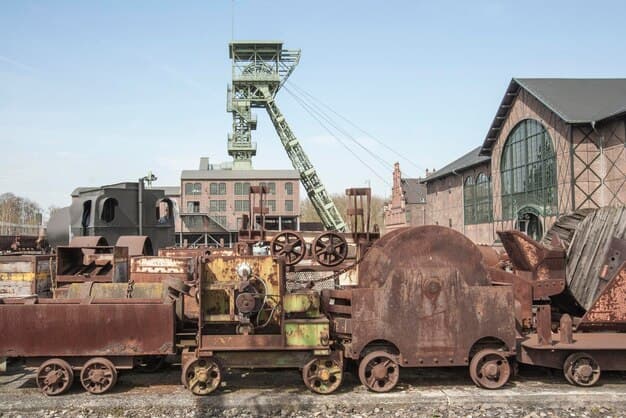World War II was a time of rapid technological advancement, with nations developing innovative solutions to meet the demands of warfare. Among these innovations, the German railway gantry cranes stood out as engineering marvels that played a pivotal role in the logistics of the Third Reich. These towering structures were not just feats of engineering but also critical components in ensuring the swift movement of military equipment and supplies across vast distances.
The Backbone of Military Logistics
In the sprawling theaters of World War II, efficient transportation was crucial. Germany’s extensive railway network became the lifeline of its military operations, facilitating the rapid movement of troops, weapons, and essential supplies. Central to this efficiency were the railway gantry cranes, which enabled quick loading and unloading of heavy cargo, minimizing delays and ensuring that the war machine kept rolling.
Design and Engineering Excellence
German railway gantry cranes were a testament to the nation’s commitment to precision engineering. Constructed from high-quality steel, these cranes featured a horizontal gantry supported by vertical columns, with a movable hoist mechanism capable of lifting substantial weights. Their design allowed them to traverse along railway tracks, providing flexibility in operations. Some key features included:
Heavy Load Capacity: These cranes could handle loads ranging from several tons to over 100 tons, making them suitable for lifting tanks, artillery pieces, and industrial machinery.
Mobility: Mounted on railway tracks, gantry cranes could move laterally, covering large areas and accessing different sections of freight yards or depots.
Precision and Reliability: Equipped with advanced mechanisms for the time, including electric or hydraulic hoists, they ensured smooth and accurate movement of heavy loads.
Durability: Built to withstand the rigors of wartime operations, including exposure to harsh weather conditions and potential bombings.
Modularity: Many gantry cranes were modular in design, allowing for quick assembly and disassembly, which was particularly useful when relocating them to new operational areas.
Versatile Applications Across Sectors
The versatility of these cranes made them indispensable in various sectors during the war:
Military Logistics: Deployed at railway depots and ports, they facilitated the loading and unloading of heavy military equipment, such as tanks and armored vehicles.
Industrial Production: In factories, gantry cranes moved raw materials, assisted in assembling machinery, and loaded finished products onto railway cars for distribution.
Construction and Infrastructure: They transported construction materials, including steel beams and concrete components, essential for building military fortifications and airfields.
Shipbuilding and Repair: In naval yards, gantry cranes lifted ship components and equipment, expediting the production and repair of naval vessels.
Notable Examples and Manufacturers
Several notable examples of German gantry cranes stood out during the war:
Strabokran: Developed by J.S. Fries Sohn company, the Strabokran was a mobile gantry crane with variants capable of lifting 15, 16, and 20 tons. These cranes were essential for lifting tank engines and turrets during maintenance and were also used in handling V2 rockets.
Krupp’s 90-ton Steam Crane: Manufactured by the German engineering company Krupp, this steam-powered crane played a significant role in handling heavy loads and carrying out construction tasks in war zones. Its capabilities were instrumental in supporting the German military’s logistical operations and infrastructure development during the war.
Challenges and Vulnerabilities
Despite their advantages, these cranes faced several challenges:
Vulnerability to Bombing: As prominent structures, they were susceptible to Allied air raids, which targeted railway yards and industrial facilities, often destroying cranes and disrupting logistics operations.
Resource Constraints: In the latter stages of the war, scarcity of raw materials and skilled labor affected the production and maintenance of gantry cranes, hampering Germany’s ability to sustain its logistics network effectively.
Operational Limitations in Remote Areas: Their utility was limited in remote or underdeveloped areas where railway infrastructure was less developed.
Legacy of Innovation
The end of World War II marked the decline of Germany’s wartime logistics infrastructure, including its gantry cranes. However, their impact on engineering and logistics practices was far-reaching. Many of the design principles and technologies pioneered in these cranes influenced post-war industrial and logistical developments worldwide. Modern gantry cranes owe much of their design heritage to these wartime innovations.
Conclusion
German railway gantry cranes of World War II were more than just mechanical structures; they were embodiments of engineering excellence and logistical foresight. Their contributions to military logistics, industrial production, and infrastructure development were invaluable, underscoring the critical role of engineering in wartime operations. Today, they stand as a testament to the ingenuity and resourcefulness of their creators, offering lessons in both the capabilities and limitations of technology in the context of global conflict.



